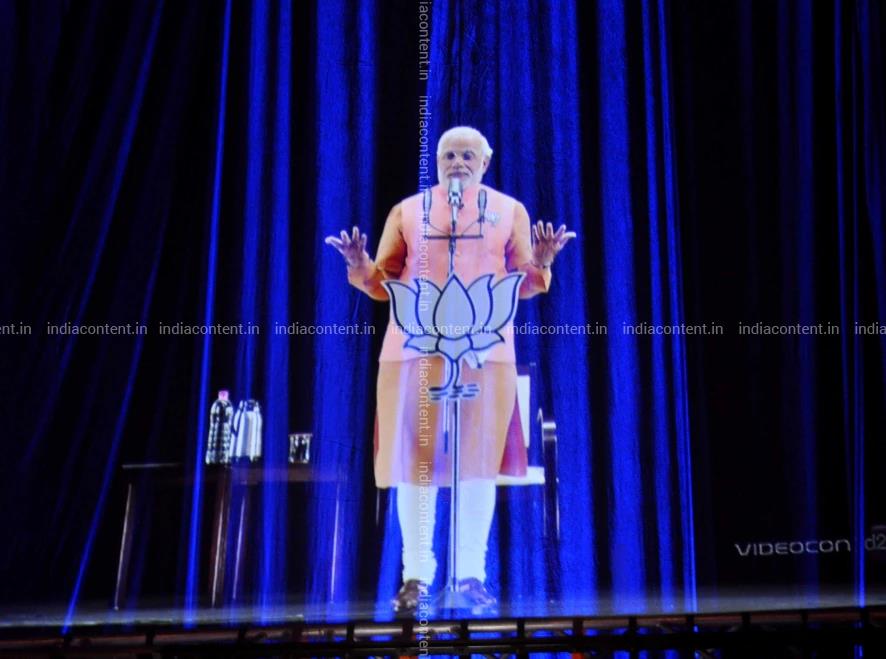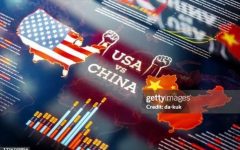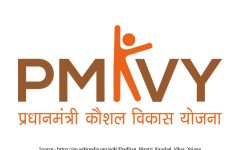Role of Social Media in Shaping Political Party Narratives
April 10, 2025 2025-04-10 11:50Role of Social Media in Shaping Political Party Narratives

Role of Social Media in Shaping Political Party Narratives
By Abishta Bisht
Abstract
In the twenty-first century, social media has emerged as a powerful tool for revolutionising the way people connect, communicate, influence, mobilize and consume information. From breaking news updates to viral trends, it influences everything, from personal relationships to global movements. Political parties around the world have increasingly turned to platforms like Facebook, Twitter (now X), and Instagram (even TikTok in some other countries) to shape their narratives, engage with voters, and influence public opinion. While it provides opportunities for greater political participation and transparency, the use of social media in politics raises worries about misinformation, manipulation, and hate speech. Furthermore, we will look at the role of social media in moulding political discourse and propaganda, as well as the risks and advantages of using it in politics.
Introduction
Political parties leverage social media to communicate their policies, mobilise supporters, and counter opposition narratives. Unlike traditional media, i.e., new reporters, papers, and channels, social media enables parties to bypass intermediaries and speak directly to their audience. This direct engagement fosters a sense of connection between politicians and voters, allowing for immediate feedback and interaction. Parties use targeted advertising, viral campaigns, and influencer endorsements to sway public sentiment. Data analytics, on the other hand, help them craft messages tailored to specific demographics, enhancing their outreach and effectiveness.
Donald Trump’s 2016 and 2024 U.S. presidential campaigns exude exemplary conduct for the same. Instead of relying on traditional media, Trump leveraged Twitter to communicate directly with his voters, bypassing journalists and news channels. His frequent and unfiltered tweets shaped public discourse, set media agendas, and kept supporters (as well as critiques) engaged. Additionally, his campaign used Facebook’s data analytics to micro-target voters with personalised ads, influencing key swing states. This strategy not only strengthened his base but also played a crucial role in his electoral success. Nowadays, almost every political party has an extremely prominent social media presence with teams dedicated for the same, under the ambit of Public Relations (PR), upholding their reputation and social media posts/engagement, keeping up with trends and news that might help them connect with their audiences better.
Brief Overview
Before social media, political campaigns solely relied on traditional forms of communication, such as television ads, newspaper coverage, rallies, and scheduled debates, to connect with voters. Politicians had to rely on journalists and media outlets to broadcast their messages, often shaping their narratives to fit the preferences and biases of news networks. This created a barrier between candidates and the public, as media organisations acted as gatekeepers, controlling what information reached the masses.
A classic example of traditional media’s influence on political campaigns is the 1960 U.S. presidential debate between John F. Kennedy and Richard Nixon. This was the first-ever televised presidential debate, and it demonstrated the power of visual media in shaping public political perception. Kennedy, young and charismatic, appeared confident, well-prepared, and composed on screen, whereas Nixon, on the contrary, still recuperating from an illness, looked pale, sweaty, and visibly uncomfortable. While radio listeners thought Nixon had performed better based on his arguments, television viewers overwhelmingly perceived Kennedy as the winner. This debate highlighted how a candidate’s media presence and visual appeal could significantly impact voter sentiment, something that became even more critical and prominent in the digital age with the rise of social media.
In India, Narendra Modi’s 2014 Lok Sabha election campaign marked a shift from traditional media reliance to a social media-driven strategy. His team used targeted digital advertising, interactive hashtags like “#AbKiBaarModiSarkar”, and WhatsApp groups to reach millions, including young and even first-time voters, to gain leverage. Additionally, 3D hologram rallies allowed him to address multiple locations simultaneously, further expanding his reach. This direct engagement helped shape his image as a tech-savvy, quite updated and capable leader and played a crucial role in the Bhartiya Janata Party’s (BJP) victory. The success of this strategy set a precedent for future Indian elections, where social media continues to be a dominant force in political campaigning.

An image of BJP’s prime ministerial candidate Narendra Modi during a live “3D hologram” telecast where he addressed audiences in 100 locations in 15 states. Photo by Shailesh Raval.
The Rise of Political Propaganda
Political propaganda refers to a convincing effort supported by political parties, political groups, and politicians. In recent decades, political propaganda has been demonstrated in the form of captivating factional slogans. In recent scenarios, political propaganda can be seen in other forms, from rewriting the history of nations which is taught in schools, to preventing the mass media (Aro, 2016).
Before social media, propaganda existed to support wars, promote certain ideologies and even legitimise authoritarian ways. However, the advent of the internet and social media has revolutionised the way propaganda is created. Unlike traditional forms of propaganda, which were often controlled by governments or elites, modern propaganda is decentralised and accessible to a wide range of actors. This democratisation of propaganda has made it more dynamic and adaptable but also more challenging to regulate and counter its present possibilities as well as obstacles. The spread of misinformation and disinformation, which may distort public opinion and erode faith in democratic institutions, is a major source of worry.
Furthermore, social media platforms can reinforce existing prejudices and create “filter bubbles” that entrench party differences and obstruct efforts to establish common ground. Political players’ usage of social media might result in privacy breaches and cyberattacks, jeopardising critical information and jeopardising the integrity of democratic processes. To counteract manipulation through disinformation, it is critical to develop media literacy and fact-checking activities. Also, enhancing data protection rules and regulations can aid in the prevention of privacy violations and cyberattacks. To eliminate dangerous or improper information, social media platforms must also take responsibility for monitoring their platforms and enforcing community norms. Even cross-party cooperation and conversation can also aid in reducing polarisation. Strong cyber security measures can eventually shield political players from cyber dangers while also ensuring the integrity of democratic processes. It is crucial to emphasise how social media has changed polity, providing both possibilities and difficulties. Political actors may leverage the potential of social media to better democratic processes and improve citizens’ lives by understanding these dangers and taking action to mitigate them.
The usage of social media dictates how political parties frame issues and set their public agendas. By managing the narrative, parties can influence what issues get the attention and their perception. For instance, a party may employ the use of social media to promote its successes, minimize controversies, or focus on opposing the rival’s achievements. Direct and simplistic forms of communication like memes, infographics, and short videos serve the purpose of amplifying the appeal and accessibility of complex issues to the general public in the form of infotainment. A strong example of such patterned narrative management is the BJP’s focus on the “New India” vision during the 2019 Lok Sabha elections. The party strategically emphasized the significance of national security to be a prominent concern by bringing the public’s attention to the Balakot airstrikes following the Pulwama attack, shifting public discourse towards patriotism and strong leadership to their advantage. By dominating social media with hashtags like #MainBhiChowkidar and videos highlighting PM Modi’s decisive actions, BJP shaped voter sentiment around national security rather than economic issues like unemployment. This controlled narrative helped the rally support and secure a landslide victory for the party, showcasing how contemporary media enables political parties to set the agenda and influence public perception.
Conclusion
As one analyses the influence of social media on political discourse, it is riveting to observe different eras in politics and how the world adapts and reacts to the constant slow-paced underlying evolution taking place around them. how people perceive information and how unknowingly, yet easily, the world can be manipulated. As one navigates through different ways of showcasing this digital landscape, it is essential to strike a balance between harnessing the potential of social media and addressing its challenges. By promoting transparency, accountability, having a rational belief system, and critical thinking, we can ensure that social media serves as a force for good in shaping political narratives and strengthening democracy.
Bibliography
Allen, Steve, and Robert J thompson. “Television in the United States – the Kennedy-Nixon Debates.” Encyclopedia Britannica, www.britannica.com/art/television-in-the-United-States/The-Kennedy-Nixon-debates
Arguedas, Amy, et al. “Echo Chambers, Filter Bubbles, and Polarisation: A Literature Review.” Reuters Institute for the Study of Journalism, 19 Jan. 2022, https://reutersinstitute.politics.ox.ac.uk/echo-chambers-filter-bubbles-and-polarisation-literature-review
Jan, Urfee. “Political Discourse .” Google.co.in, 2025, www.ijnrd.org/papers/IJNRD2403211.pdf. Accessed 22 Mar. 2025
Oh, Chong, and Savan Kumar. “How Trump Won: The Role of Social Media Sentiment in Political Elections.” PACIS 2017 Proceedings, vol. 48, 19 July 2017, https://aisel.aisnet.org/pacis2017/48/
Saaida, Mohammed. “The Role of Social Media in Shaping Political Discourse and Propaganda.” ResearchGate, unknown, 5 Aug. 2023, www.researchgate.net/publication/372936619_The_Role_of_Social_Media_in_Shaping_Political_Discourse_and_Propaganda
Smith, Bruce Lannes. “Propaganda.” Encyclopædia Britannica, 21 Jan. 2024, www.britannica.com/topic/propaganda
About the author
Abishta is a second-year economics student at OP Jindal Global University. She is enthusiastic about research and writing on diverse topics, synthesising information, and articulating insights to educate myself. Although, at the moment, her writing thus far has primarily been for assignments, she is eager to expand her horizons and explore new avenues of expression. She is committed to transforming her academic explorations into impactful narratives that resonate with a broader audience.






